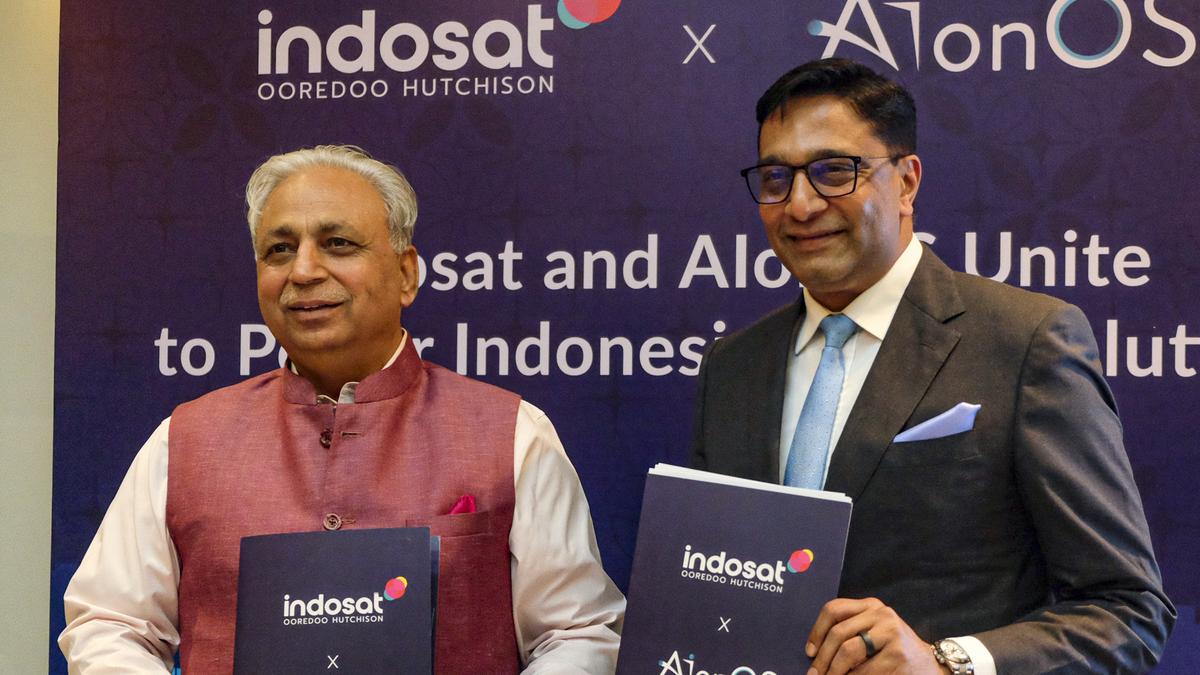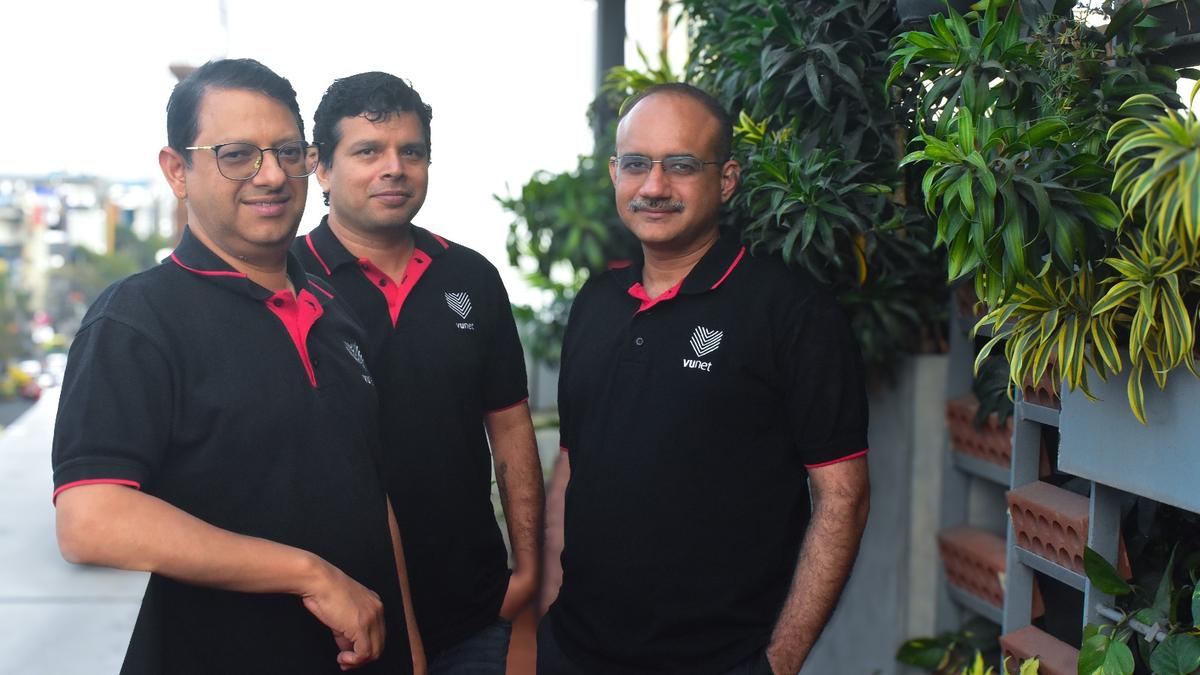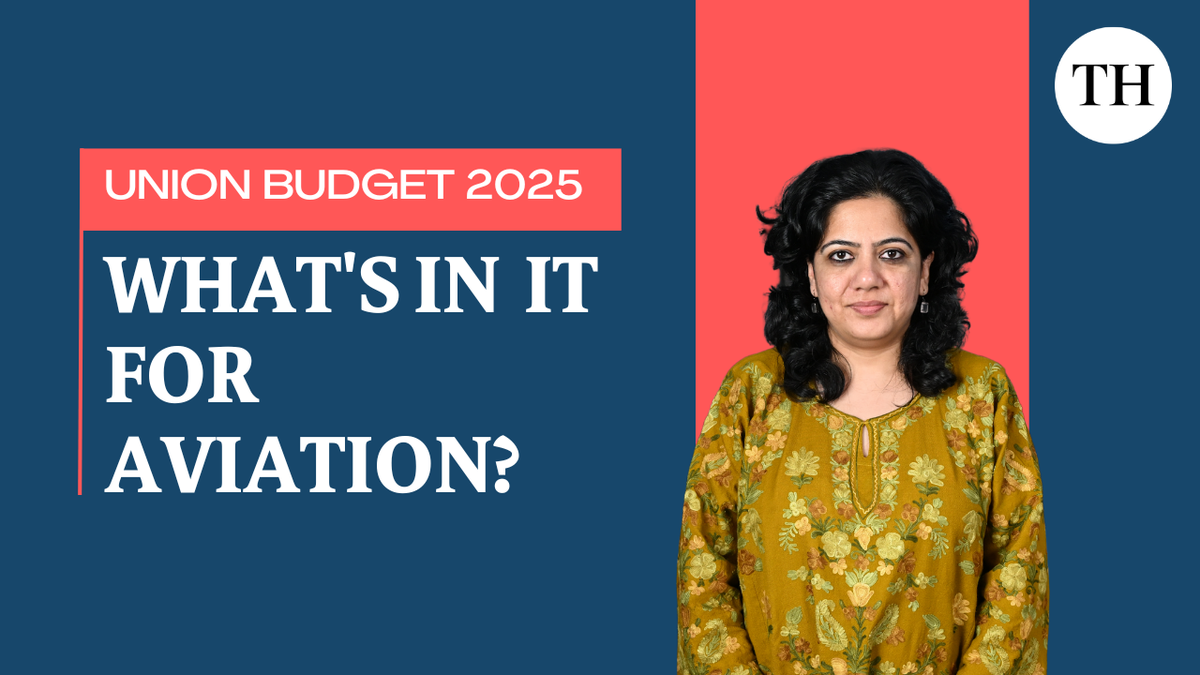C.P. Gurnani, co-founder and Chief Executive Officer, AIonOS and Vikram Sinha, President Director and Chief Executive Officer Indosat Ooredoo Hutchison sign MoU at Aerocity, in New Delhi, on January 27, 2025
| Photo Credit: PTI
The rapid uptake of Deepseek, the Chinese-developed artificial intelligence (AI) foundational large language model (LLM), has put the AI race in context, with the foundational model developer’s app leading even on American app store fronts.
In India, Gurugram-based company AionOS announced on Monday (January 27, 2025) that it plans to work with Deepseek — both with the open source model available to the general public and with the firm itself in Guangzhou — to open an AI centre of excellence in Indonesia, in partnership with the telco Indosat.
ALSO READ: What is DeepSeek, and why is it disrupting the AI sector?
The AI race has matured to the point where industry observers have marvelled on Chinese advancements in the field even in the face of punishing sanctions restricting availability to the most powerful hardware, such as GPUs and processors, that cutting-edge AI relies on.
Deepseek is able to demonstrate responses and analytical prowess that the OpenAI-backed ChatGPT does, with what is likely inferior hardware and lower cost. (Deepseek still considers the lack of access to advanced chips a hindrance, the firm’s CEO reportedly told Chinese officials)
India’s position in this race has so far been as a player taking advantage of downstream efficiencies — as AI models become cheaper and more open-source models become available to researchers and businesses to customise, firms have been working to take advantage of those shifts, rather than make expensive upfront investments in creating a foundational model.
The logo of DeepSeek is displayed alongside its AI assistant app on a mobile phone, in this illustration picture
| Photo Credit:
Reuters
From the government side, the focus has been on making local language solutions for translations, like the BHASHINI initiative, which has emerged as a key priority for improving linguistic accessibility in dozens of languages.
“Ultimately, the cost of technology has to reduce, the cost of processing has to reduce, and the cost of deployment has to reduce,” C.P. Gurnani, AionOS’s CEO and founder, and a former CEO of Tech Mahindra, said in a briefing on Monday (January 27, 2025).

When Sam Altman visited India last year, Mr. Gurnani accepted a challenge from the OpenAI CEO to build a foundational model in India, a clip that had gone viral. While that has not yet happened in the Indian industry, Mr. Gurnani said that “there will always be new developments that will happen because it is a very fast evolving industry, [where there is] a new announcement every week.”
Indian firms have not yet loudly announced any work around Deepseek, which as an open source model can be built on top of; Mr. Gurnani, for instance, was clear that while his firm was working with the firm, the output of those efforts would be limited to Indonesia.
“Indonesia is a neutral country,” said Vikram Sinha, Indosat’s CEO. Mr. Sinha, an Indian executive who has led a tripartite merger for the Indonesian telco, is in New Delhi as a part of the business delegation accompanying president Prabowo Subianto.
Aravind Srinivas, the CEO of San Francisco-headquartered Perplexity AI, Inc., a leading generative AI firm, indicated that these cost considerations should not lead to an averseness to building a foundational model.
“India must show the world that it’s capable of ISRO-like feet for AI,” Mr. Srinivas said last week on X, formerly Twitter, referring to the Indian space programme’s recent high profile successes.
Mr. Srinivas warned against falling into the “trap” of avoiding building foundational models like Deepseek due to the high expenses.
Mr. Srinivas’s posts followed a statement in December by Infosys co-founder Nandan Nilekani, who said at an event that building foundational models was “not the best use of” financial resources.
But Mr. Nilekani’s point was not that the money was better used building on top of existing models, but that India should instead build the computing and physical infrastructure that AI runs on, as building a foundational model now may involve using existing computing resources abroad.
Published – January 28, 2025 12:25 am IST




